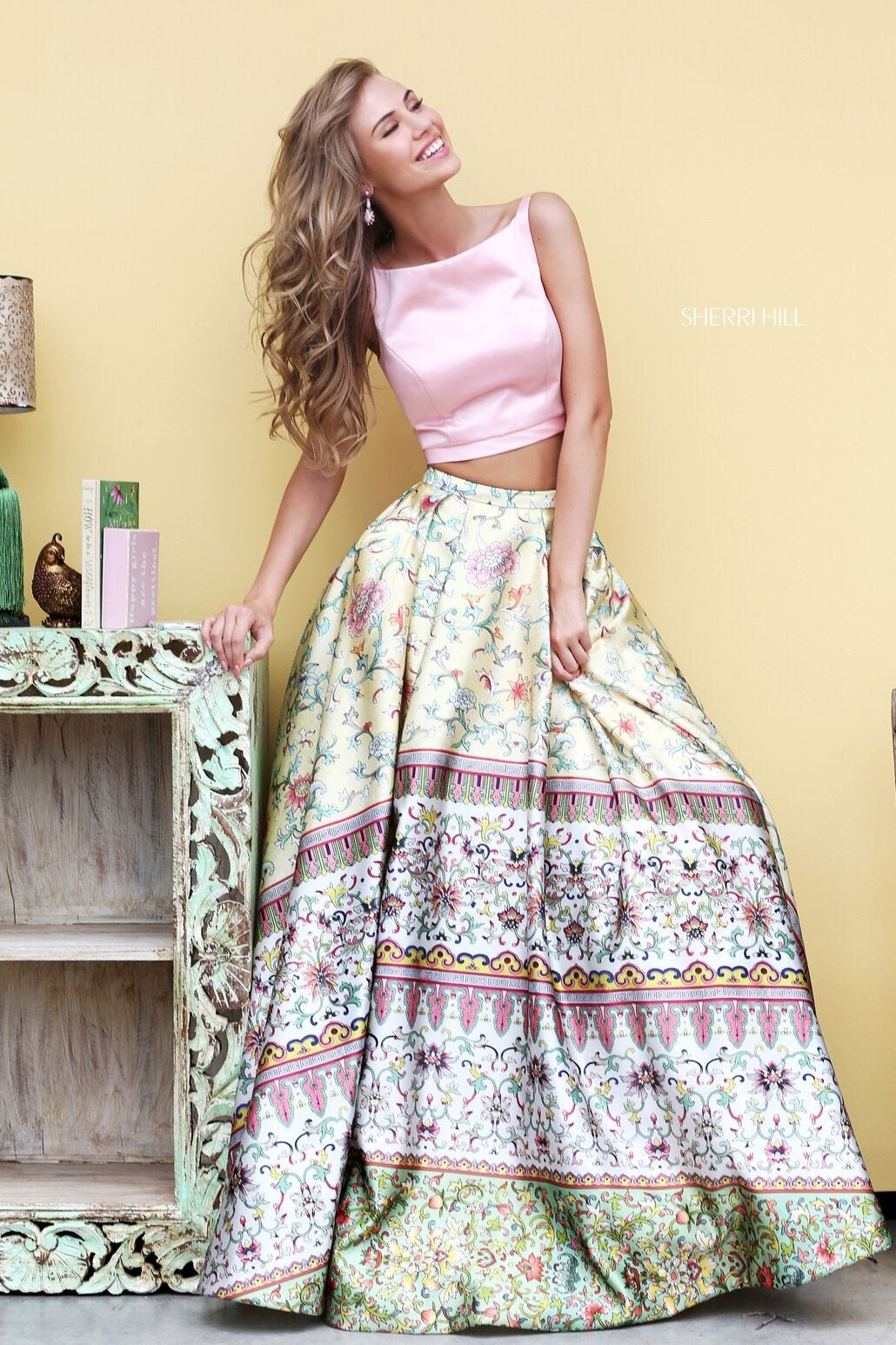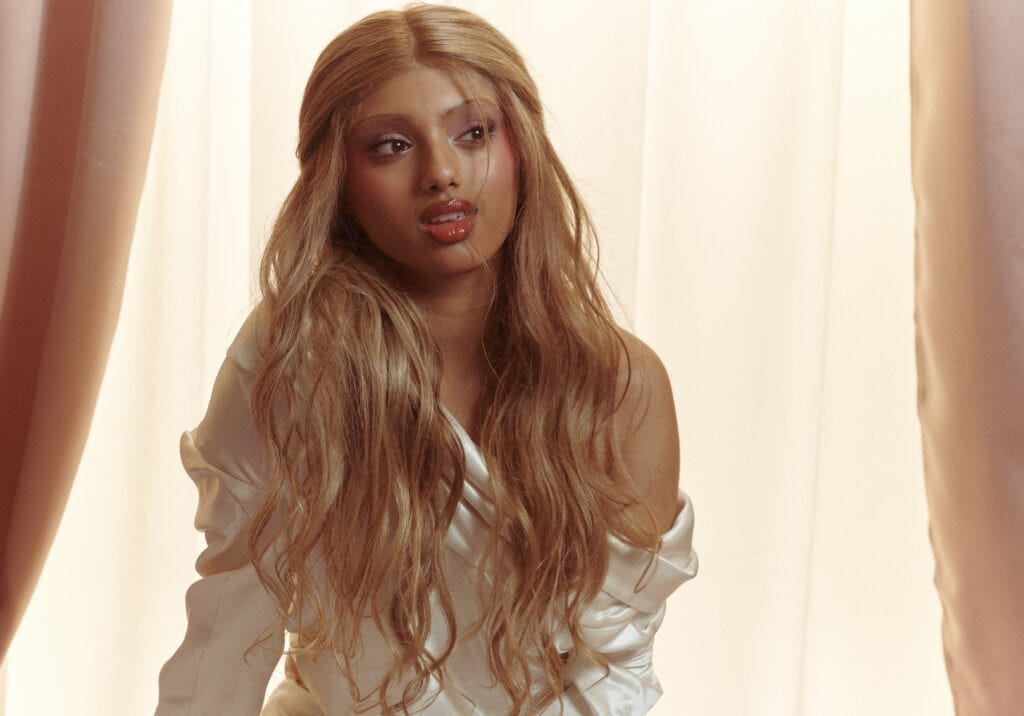I’m mindlessly scrolling through TikTok when I come across a video of a well-meaning fashion influencer. She’s going through a slideshow featuring beautiful, white women, all wearing dresses that are heavily reminiscent of South Asian cultural clothing. They’re draped in flowy fabrics, intricate patterns, and shimmery dupattas. The influencer asks the camera, “What are we classifying this wedding guest vibe as?” and mentions, “It’s very European. It’s very classy.”
I don’t think this creator meant any harm to the South Asian community in making her video, but it definitely struck a chord. I was immediately brought back to all the times I avoided public spaces while wearing a salwar in fear of sharp gazes and comments. To the years as a teenager when I only wore silver jewellery because gold made me look “too Indian”. To the image of my father wearing full suits to the bank in the hopes of looking less like an immigrant and avoiding disrespect.
“It’s very European. It’s very classy.”
White women wearing Desi clothing (all while refusing to acknowledge it as such) is not a new phenomenon. Personally, I’m reminded of the bejewelled bindis that were abundant during the 2018 Coachella era, but you may also be thinking of that TikTok of a white woman showing off her two-piece prom dress that was, obviously to anybody South Asian, a rebranded lehenga. When a user commented on her video explaining this, she replied by saying that her dress “looks very similar to what you’re describing”.
What I’m trying to say is that this is not a one-off. It’s a pattern.
Henna & Yoga & Chakras, Oh My!
Whether it’s a teenage girl applying tiny spots of henna all over her face, a guided yoga session led by an instructor who pronounces “ohm” as “ummmmmm”, or a “get ready with me” vlog that details an intensive hair oiling routine, South Asian cultural elements are everywhere when you look for them. Often, though, they’re not recognized as such.
This leads us to the big question of appropriation versus appreciation. Is it wrong for people who aren’t of South Asian origin to use henna? To wear lehengas? To do yoga?
In my opinion, the answer to that question is no. Everyone has the right to order their chai lattes and apply their kajol regardless of race, and I’d like to make it very clear that I’m not writing this with the intent to attack or mock every white person who’s ever taken a yoga class before. That’s not the problem here.
Okay, Trina, so what exactly is your problem? Well, imaginary reader, I’m so glad you asked.
While there are some white influencers who use an incredible amount of respect when discussing other cultures, there are too many who don’t.
There’s a difference between the influencer who is trying their hardest to pronounce the South Asian brand name of their hair oil properly and the one who is going on and on about how awful it smells. To put it simply, that difference is respect and recognition. While there are some white influencers who use an incredible amount of respect when discussing other cultures, there are too many who don’t.
The issue arises when the internet becomes comfortable doing hot yoga and henna freckles and co-opting Desi fashion as “classy and European” while also spewing vitriol and hatred at actual South Asians.
The Fancast Fiasco
The abundance of casual racism against South Asians online was most recently highlighted by TikTok’s collective meltdown over Tangled. Yes, the Disney movie.
It all started when fans of the original film shared their fan-made casting for a hypothetical live action version of the movie. Many suggested that they’d love to see Rapunzel be played by a South Asian woman, specifically Avantika Vandanapu, a Telugu actress most well-known for her role in Mean Girls. Thus began the outcry.
All the most common arguments were easily refutable: She doesn’t have Rapunzel’s hair! (Wig. Dye. Also, no actress in the world naturally has 70 feet of blonde hair.) Rapunzel is originally German! (She’s actually from the Kingdom of Corona in Tangled. If we’re talking about the original story, that takes inspiration from a Persian fairytale.) This is ruining my favourite childhood movie! (The animated version still exists. Also, maybe you didn’t hear me the first time, but this is a FANCAST.)
When we get to the core of all the shallow criticisms, we find the truth: People want their white darlings to stay white darlings. You can call prejudice whatever you want, but that doesn’t change what it is.
Why the Blind Eye?
I see the uninhibited racism everywhere. In the Pulitzer Prize-winning novel I picked up, one that I’d heard nothing but praise for, which contained a description of an Indian taxi driver smelling like shit within the first few chapters. In the PewDiePie vs T-Series rivalry that started out as making fun of a huge corporation and ended with the joke just being that the corporation was Indian. In the recycled videos of street food that go viral every couple of weeks, commenters mocking a poverty-stricken country from their air conditioned apartments.
While consumers have no problem with racism (and maybe even house some prejudice against brown people themselves), progress cannot be made.
If I can see it, and you can see it, why can’t everyone? Why is casual racism so quickly glossed over, even by those who would actually benefit from being cautious to avoid racism like famous authors and influencers?
Honestly, I think the answer is simple. If the general public doesn’t care, then celebrities, brands, and influencers have no need to care, either. While consumers have no problem with racism (and maybe even house some prejudice against brown people themselves), progress cannot be made.
The Turning Tide
More and more, voices like mine are coming forward. South Asian people are making a point to call out racism and appropriation when they see it. Sabina (@fabgirl33), a Pakistani TikToker, made a video speaking on Zara’s cultural appropriation of South Asian clothing that gained nearly 300k views. Another video by Yazmin (@yazmin.adalynn) that discussed the casual racism and stereotyping that happens to Indian-Americans garnered over 2M views.
I’d like to think this is a sign of change. Progress. I hope that we, as a society, look back at our treatment of brown people in ten years time and think, “Damn, that was kind of fucked up.”
That being said, racism online doesn’t end with South Asian people. In the digital age, discrimination is complex and experienced differently by every individual of every identity. This is my experience of it. I urge you, if you have any desire to at all, speak out about yours.
To the white person reading this, I really do appreciate it. I know that it takes consideration and self-awareness to empathise with a struggle that isn’t yours, especially when it would be easier to just ignore it. Please continue to use that self-awareness to listen when people with identities other than your own are speaking, as their voices often go unheard.
And to the brown people reading this… I don’t know. Hold on, I guess?
A note: I often used words such as South Asian, Desi, brown people, and Indian in this post as they all relate to my identity. However, they are not relevant to everybody who has experienced this sort of discrimination and are NOT all-encompassing. Basically, what I’m trying to say is that this barrage of racism is not solely experienced by Indian people.







I teach in a majority South Asian community and I’ve learned so much this year about micro aggressions toward Indian students (one colleague told me that students will ask you to change their grade bc “bartering is part of their culture” - jfc). I deeply appreciate your thoughts here.
I've just come across your substack page and I am so grateful that I have. this is a beautiful essay and it makes me so happy to see a fellow Indian creator on here! As you were talking about in your "insta poetry" essay, you have not only a musicality to your writing- but also an evident amount of care put into each word, making even your prose seem like poetry ❤️